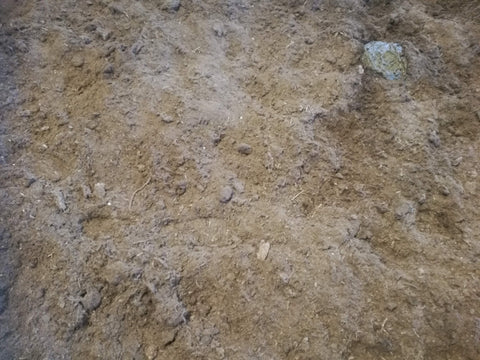This final 4dBarn transition cow bedded pack area blogpost handles the characteristics of different bedding materials. Like I wrote in my blog in January, bedding price, availability, characteristics, storage space, previous experiences, time of the year all affect the bedding choices. It’s important to keep the bedded pack area dry and clean. More animals mean increased need for bedding, regardless of bedding material.
The interviewed farms used straw, peat or sand. Some used woodchips as the bottom layer to absorb excess moisture. One farm used cutter in the bedding mixture. Here is a list of farmers’ comments on pros and cons of different beddings:
Sand
+ Inorganic material, no flies
+ Easier to take care of than i. e. straw
+ Works well in summer
- May freeze in winter, cold (only used in summer)

Sand bedding
Straw
+ Warm in winter
+ Possible to gather from own fields
+ Works well when mixed with peat; gives structure, bedding may start to compost
- Doesn’t absorb moisture well
- Lots of flies in summer
- Farmer’s lung rules out straw

Straw bedding
Peat
+ More hygienic, less flies
+ Absorbs moisture better
+ Often used in mixture with straw
- May freeze in winter (especially if the bedded pack area is very close to big doors)
- Lots of dust in the barn

Peat bedding
A mix of beddings
Several farms used a layer of woodchips under a bedding layer. Some used both straw and peat to help the bedding to compost better. None of the farms had a real compost bedding which needs to be stirred daily to keep the reaction going on.

Woodchips mixed in straw bedding
By mixing different bedding materials you can have all the good sides of different beddings in one mixed bedding. Woodchip layer absorbing moisture, peat binding the bedding and absorbing moisture, and straw giving structure to the bedding is one example of a good bedding “receipt”. A woodchip layer may also be used to “re-establish” the bedding without emptying it. It also adds more carrying capacity so you can drive on the bedded pack with a telehandler and don’t have to worry that it will sink into the bedding.
Beside the bedding characteristics, it’s equally important that the practical management doesn’t take too much effort. A functional bedded area can be efficiently emptied and filled, the bedding is storage close to the cow barn and the farm has a proper machinery for bedding handling. When the management routines go smoothly, keeping bedded pack clean and dry becomes easy and flowing!


